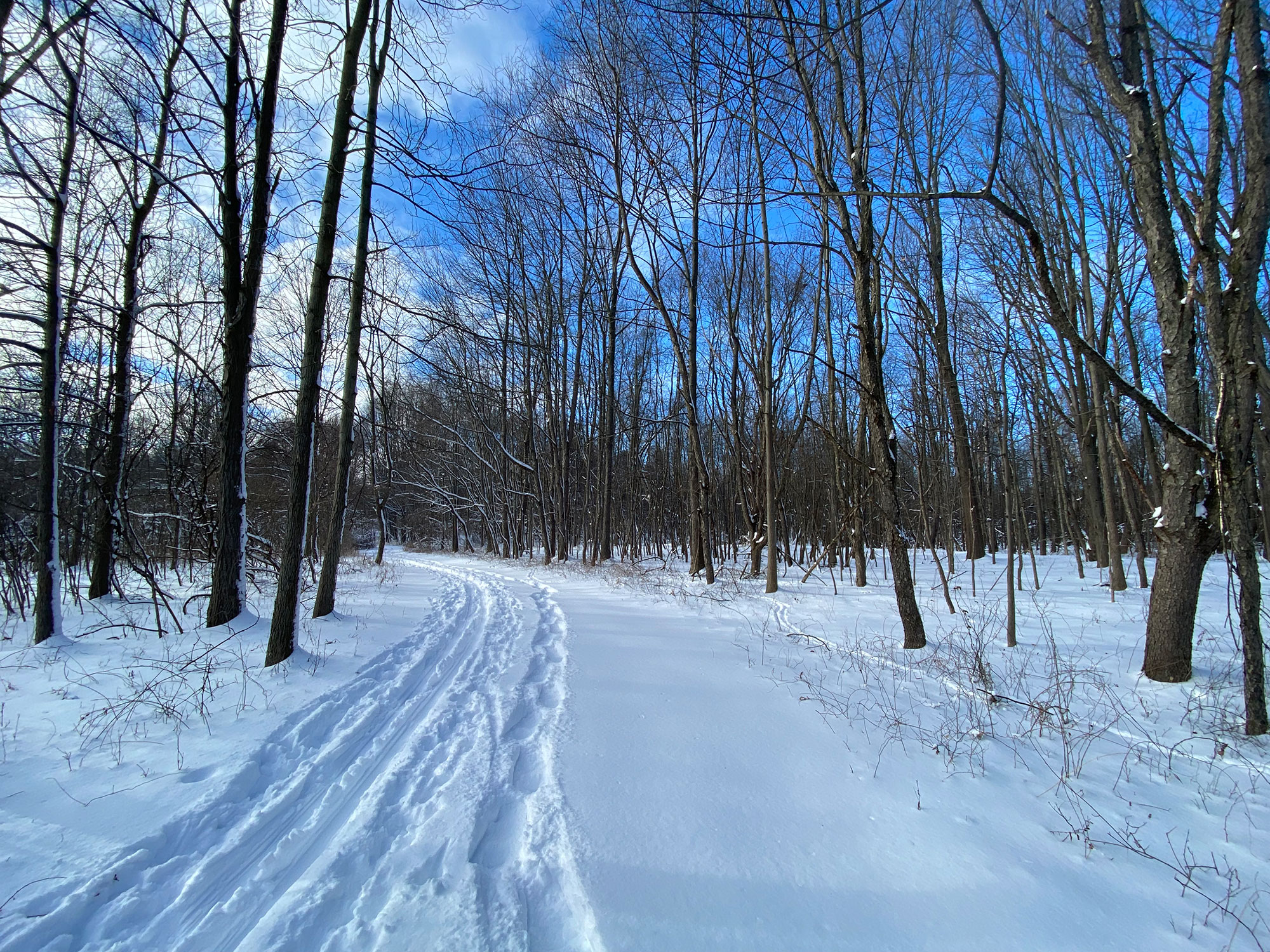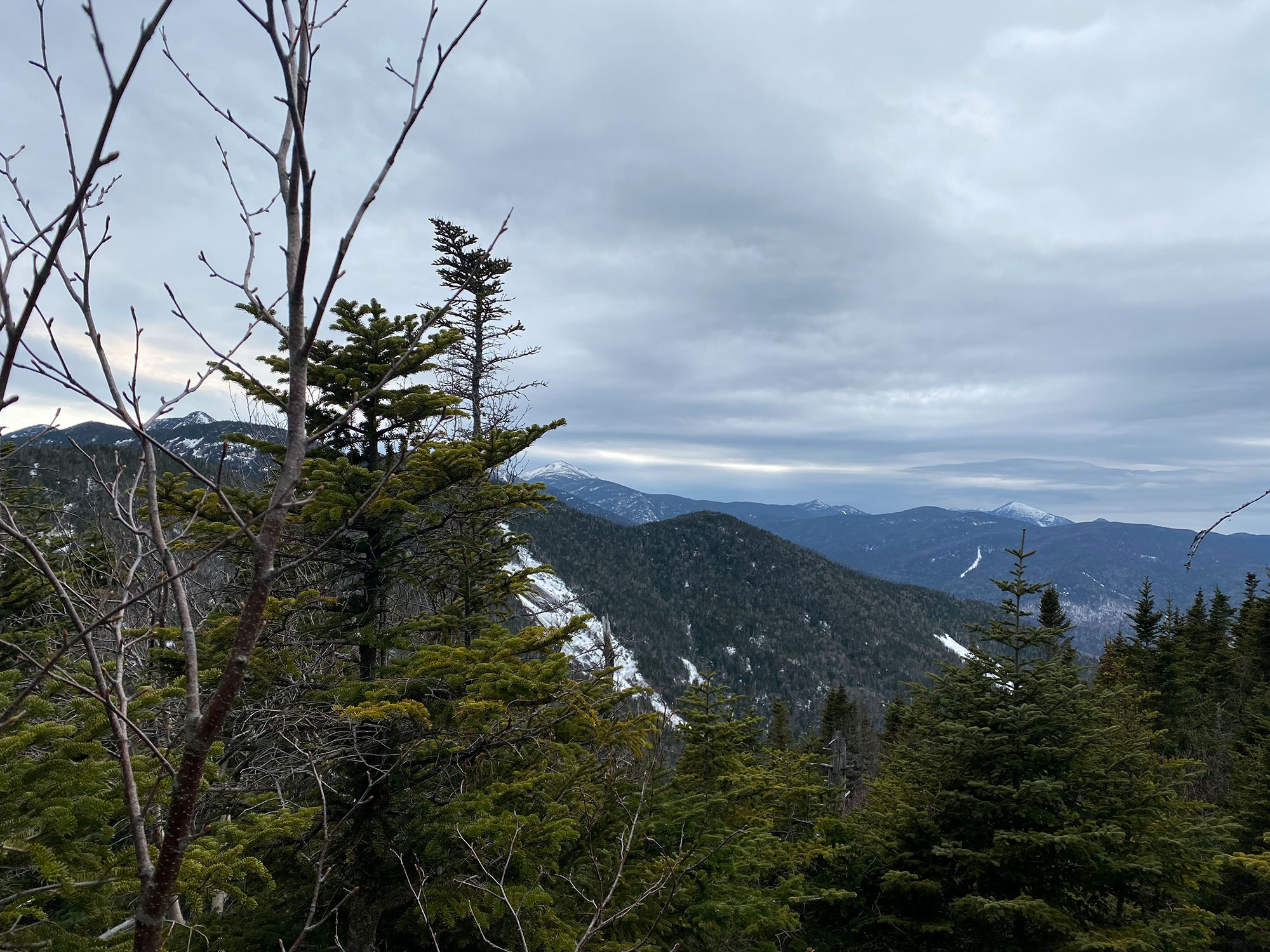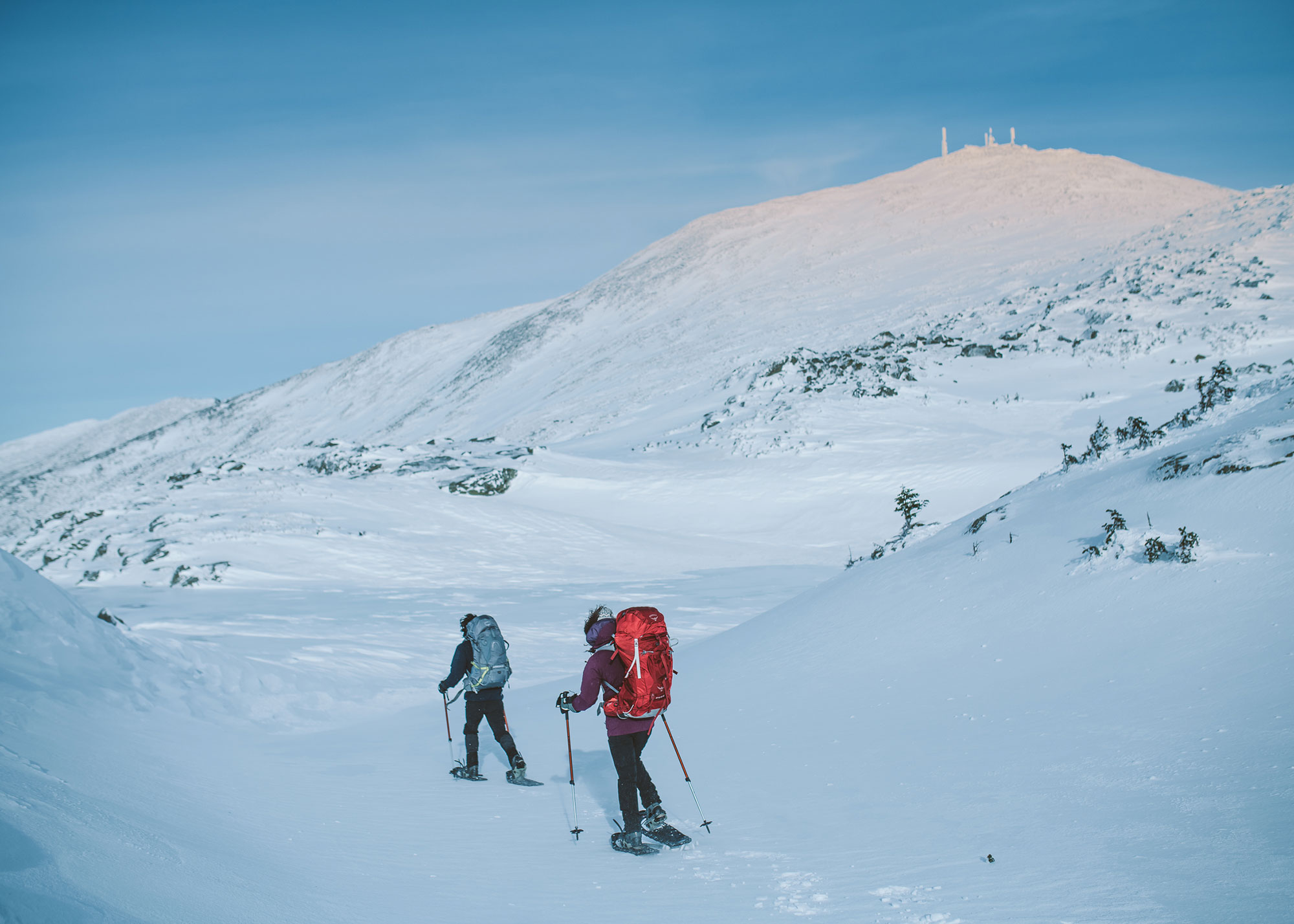Up until last year, I was barely a winter sports enthusiast, with only a few snowboarding trips and casual day hikes under my belt. But as I began to grow more serious about backpacking in other seasons of the year, the thought of sitting idle while temperatures dropped was horrifying. My first season snowshoeing was well spent on local park trails and undulating New York landscapes, adjusting to cold or wet toes and sweaty appendages. As I get ready to pull my snowshoes down from my closet, here are 10 things I’ll be keeping in mind that I took away from last season.
1. Trail Etiquette
When hiking in warmer seasons, you and the hiker you pass are on common ground, both in boots or sneakers, just stepping on trail. The same can’t be said for snowshoeing, where you’re sharing a trail with skiers. Those using cross-country skis rely on the tracks made by those ahead of them, and walking through is a big no-no. Keep to the right, giving space to the ski tracks. After all, some of the beauty of snowshoeing is being able to widen trails in a less impactful way. If there aren’t already snowshoe tracks, consider it a great opportunity to practice breaking trail!
2. Snack and Hydrate
If I had a nickel for the number of times I should have stopped to eat or drink while snowshoeing last year, I’d probably have a nice new pair of hand warmers. When snowshoeing during cold, dry conditions in over a foot of snow, your body will be burning calories fast. Stop to have a quick bite every hour, whether it be a few handfuls of trail mix, a peanut butter and banana sandwich, or a cold burrito or leftovers!
Additionally, you’ll be more likely to perspire faster, so taking in fluids is key. Consider storing your water bottle upside down in your pack; since the water will freeze from the top, any collected ice will be at the bottom of the bottle once it’s flipped over. You can buy insulating sleeves for bottles and water reservoirs and tubes as well, or even consider boiling water to bring along before leaving for the hike. Any way you have it, be sure to consume at least a liter every two hours, and more if you are on a particularly strenuous snowshoe trip.

3. Count on a Bigger Pack With More Weight
I hate to break it to you, but you will be carrying more while snowshoeing than hiking during a warmer month. Even if you pack ultralight, there are simply more layers and gear that are required during this time. There’s nothing negative about this; being prepared to bring more and understanding why will hopefully mentally lighten your load. Look into a pack size of at least 38 to 40 liters to accommodate gear, clothes, and fuel. You may need a pack specifically for winter hiking.
4. Know Your Gear
Sharp things, things that shine, and things to help do your business should be filling your pack this winter. Ice Talons or similar traction assistance are good to pack during the earlier and later weeks of winter, when snow height may be inconsistent with wearing snowshoes and ice crusts form. Trekking poles are a huge help when moving along an unbroken trail, or getting up a mountain incline. With the extra weight on your feet alone from the snowshoes, poles will be a necessity on your hikes.
With the ground frozen, it will be difficult to dig any catholes to poo into. Packing a WAG (Waste Alleviation and Gelling) Bag will give you a nice kit to help take care of business, and the air-tight bag will help you pack it back out with you. Additionally, unless you’re going out for a casual snowshoe walk in the height of sunlight, a headlamp should end up in your pack. Due to early sunsets and the unpredictability of winter hiking many are out in the woods much later than they anticipate, and are left without a reliable way to provide light. Rechargeable or battery-powered options exist, depending on your preference.
5. With Great Possibility Comes Great Navigation
Experiencing the backcountry during winter time is a whole new experience. In the right ground conditions, snowshoeing off of marked trails will allow you to bushwhack to new views or up to summits, and venture across frozen water. But just like hiking in the backcountry, all it takes are the right conditions to get lost in it. Sharpen your navigation skills before heading out, so you’ll have more confidence if the weather picks up or you simply get lost. Try less to rely only on a phone compass or GPS app, and instead go with gear that won’t fail in the cold. A map and compass should be in your pack regardless of the season, but determining declination and direction can assist in a safe exit out of the woods. If your snowshoeing plans are on the more extreme side, consider a backcountry GPS that will also be able to send out an SOS signal if you or someone else needs a rescue.

6. Study the Weather Forecast
Good hiking conditions can be present even when it’s freezing and there are multiple feet of snow on the ground. More often than not, those are the right conditions! Checking how the weather has behaved for the days leading up to your hike will help you understand what to expect. For example, days of warmer temperatures and sun should call for you to rethink water crossings, and avoid them altogether when ice is thinner than 4 inches. On the other hand, if a snowstorm is moving into your hiking region, you may want to consider postponing or relocating the hike altogether; especially in the mountains, weather can change quickly from pleasant to poor. Websites like Mountain Forecast can even show what conditions will be like on your chosen summit.
7. Expect the Unexpected
There are some risks during winter time that are easier to avoid than others, nonetheless being aware of as many as you can will help ensure a smooth trip out and back. If you’re breaking trail in the backcountry, try to avoid stepping close to low spruce trees. Beneath the snow could be branches waiting for you to step on and fall through, known as a spruce trap. If you’re caught in one try not to panic, and do your best to dig yourself out with trekking poles or snowshoes, or have a hiking buddy assist you safely.
You may also realize while hiking that you aren’t getting along as fast as you would in warmer conditions. You’re doing great, this is just totally normal between the amount of weight being carried and having to trudge through snow. Moments like this when the day is nearing an end are when having a light source, an extra snack, and warm layers will provide peace of mind.
8. Nail Down a Layering System
I learned layering isn’t something that will be mastered on the first few outings. Give yourself a few shake-down hikes to adjust to a working layering system. Guidelines exist to shed light on perspiration or hypothermia fears, starting out with not wearing cotton. The saying “cotton kills” is meant to convey the gravity of doing so; cotton will hold more than 20 times its weight in water, meaning your perspiration won’t dry, and will draw heat away from your body.
Instead, focus on synthetic or merino fabrics as your first layer, to aid in wicking sweat away from your skin. Next comes your insulating mid-layer, and with it some combination or another of wool or puffy items. Last but surely not least, cap your outer layer off with a wind or waterproof shell to keep yourself covered from any winter conditions. As your snowshoeing hikes stack up, you’ll realize you may enjoy different blends of layers over others, and that’s OK. Regardless, be sure to pack it all, as layering systems are meant to be complementary.
Finally, be bold, start cold! You’ll become hotter and start to perspire the more effort you put out on your hike. Starting with wearing every layer you’ve brought will just lead you to taking them off as you go, versus starting with those clothes stashed in your pack.
9. Care For Your Body
All in all, snowshoeing is some work. When I began last season, my aspirations of getting ready for winter summits dropped down to reality once I broke trail for the first time on a flat trail. Before your hike and after, be sure to stretch those muscles. Your back and core will be holding some of your pack weight, and your legs will be moving with your snowshoe weight alone.
Aside from eating and drinking during your hike, be sure to fuel up properly beforehand as well. Many opt to skip breakfasts on earlier days, but winter should be the exception. A good protein and calorie-filled dish, whether it be oatmeal with fix-ins, yogurt and fruit, eggs, etc. will truly make a difference while moving, as will lots of water before you leave your house. And to care for your mind, I suggest bringing along a couple of morale boosters, like your favorite cookie or candy, and having one at the summit and one back at your car. If the hiking gets too hard, you’ll still have something to look forward to!
10. Have Fun!
Snowshoeing really opened my eyes to winter recreation. It felt good to be prepared and have a successful outing, and to realize what I was missing for several seasons prior. Though your pack will be heavy, don’t shy away from bringing bonus items like a pair of binoculars to spot winter birds. Be a little kid again, and fall down to make a snow angel. One of the best things I did while snowshoeing, but not on snowshoes, was butt-sliding down the Wedge Brook trail descending Lower Wolfjaw in the Adirondacks. Be sure to pack in moments like that on your hikes, and you won’t look back at snowshoeing.

Ethan Gresko
Ethan is a New York State native who enjoys day hikes between the Adirondacks and Hudson Valley, to the Finger Lakes. He loves the written word, is an aspiring 46er, and a firm believer that you have to go down before you go up!
Related Posts
April 2, 2024
10 Tips for Mountain Biking Etiquette During Mud Season
One rough spring could ruin the…




